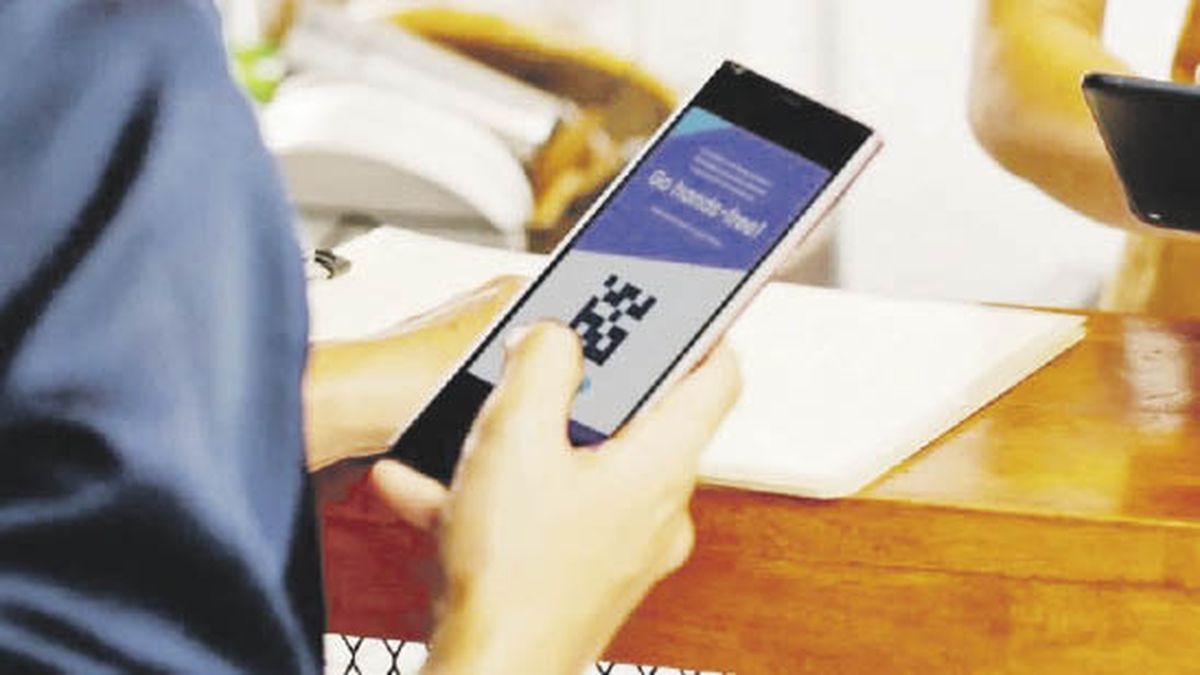In the first 15 days of January, the daily average of QR-initiated interoperable transfer payments was 253,056 transactionswhen in the first 16 days of 2022 the number of operations per day averaged 46,828.
The exponential growth registered by these payments has led to more than 52 million operations being carried out through this system since its adoption. These numbers include only interoperable transfers and not those that are made from a virtual wallet to a reader of a merchant of the same company.
Likewise, when analyzing the type of account used in these operations, it can be seen that Nearly 86% of payments initiated with a QR code were made by customers who used their sight accounts and 14% used their payment accounts.
On the business side, meanwhile, 61.3% of them accredited payments in sight accounts and 38.7% in payment accounts.
While the use of electronic money advances, the Central Bank recalled that due to the Carnival holidays (next Monday and Tuesday) bank branches throughout the country will not open.
For this reason, electronic channels, such as home banking, mobile banking and ATMs, will work as they usually do on holidays.
The transfer system
One of the main measures that gave strength to this payment method was Transfers 3.0, a system that was launched in November 2021 and that incorporated the interoperability of QR codes.
In this way, a user of financial services can make transfer payments using any QR code, only with a phone and with any virtual wallet or bank application that offers this service.
The new open and universal ecosystem contributed to stimulate greater competition between the different actors in the system, which resulted in better conditions for users and businesses.
The objective, in fact, was to promote the formation of an open and universal digital payment ecosystem, and to achieve a greater inclusion of those sectors that still do not use financial services, one of the management axes of the monetary institution.
Another of the measures that the BCRA Board of Directors took to vigorously develop the use of mobile payments was in February 2022, when it drew up new technical requirements for Payment Service Providers (PSP) and financial entities that offer the digital wallet service, which aimed to reinforce measures to mitigate fraud in operations with digital wallets.
Strictly speaking, a technical security process was added to the already implemented customer authentication and authorization before payment instructions, to complement and reinforce the security measures previously adopted by the monetary institution.
Also in that same month, the Registry of Interoperable Digital Wallets was created, so that financial entities and PSPs that provide the digital wallet service can register and obtain certification to provide the service.
The registry, which has been available on the BCRA website since July last year, allows users to have information on those wallets that can be used to make transfer payments by reading any QR code.
Another of the keys that gave impetus to the use of the QR code was the determination of the BCRA to give the system immediacy, so that businesses receive accreditation automatically, either in bank or payment accounts. Thus, total immediacy of payments is guaranteed 24 hours a day, 7 days a week and they are irrevocable payments.
In the same way, it is an inexpensive means of payment both for those who use it when making a purchase and for businesses.
The former never pay a commission for these operations, while businesses have lower costs than other transactions, since these payments have a price range of between 6 and 8 per thousand (plus VAT), to which is added lower financial costs for the immediacy.
In addition, it allows them to expand the range of collection options and reduce the use of cash at the premises, which results in lower expenses and greater security.
QR-initiated interoperable transfer payment is flexible as it is not necessary to have an associated debit card to perform the transaction. Financial entities, in fact, can open virtual savings accounts for their clients without having an associated debit card, beyond the fact that they must issue it if the user requires it.
Source: Ambito




